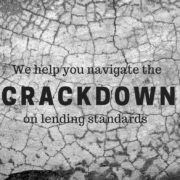
So you’ve decided to finally take the plunge and start saving for a deposit to buy your first home? Here’s a few handy tips to get you started.
Saved for a holiday before? Or a car? What about TV or computer?
The good news is that saving for a house deposit isn’t too dissimilar. It’s just on a much grander scale.
However by following the tips below you can achieve that goal in a year or two.
Step one: Create a budget
Your very first step is to work out exactly how much you can put away in a savings account each month. And to do this, you need to create a monthly budget.
First, calculate your income: Look at your pay slips or your bank statements to see how much is going into your account on an average month.
Second, work out your expenses: Check your bank statements, bills and receipts to calculate how much you’re spending on things like rent, groceries, transport, medical expenses, utilities and clothing. Include payments you make once or twice a year, like car registration, and work out the monthly cost.
Third, set up your budget: Once you know your income and expenses hop online and use ASIC’s free budget planner to crunch the numbers.
Four, review, cut back and save money: A daily take-away coffee costs $120 a month. So too does about fifteen drinks at a bar over the course of a month. Eating out at a restaurant, or takeaway food, is also much more expensive than cooking at home. Regardless of your vices, the best way to stop any wasted spending is to track your money over a month or two and identify where the leaks are.
Step two: Work out how much you’ll need to save
While most of us dream of living in that $1 million home nestled in an inner-city leafy suburb, set your eyes on something a little more realistic.
Remember, you have to save a deposit of about 10-20% of the property’s value,.
If it’s your first home you’ll most likely aim to save something in the ballpark of $200,000 to $500,000.
That means you’ll be looking to save anywhere between $25,000 to $100,000.
Step three: Set timelines, track your progress
Once you’ve determined a figure you want to save, you now need to create a roadmap to get there.
The first few months will be the toughest, so set realistic expectations to begin with and increase as time goes on. Rest assured however that as you see your savings increase, you’ll be more and more motivated to cut back on your expenses.
For example, aiming to save $1,000 for your first month, and then finding an additional $100 in savings each month means you’ll have saved more than $20,000 (incl. interest) over the course of a year.
Even better news, in 18 months’ time you can have enough for your home deposit if you start saving now.
Sticking to these goals may mean you need to opt for a local holiday camping at a nearby national park instead of jet-setting overseas.
But remember, short term pain for long term gain.
Step four: Look into savings accounts and schemes
Once you’ve started saving you’ll want to make sure you’re not tempted to spend it. Look into a savings account with a good interest rate or a term deposit.
Whatever you choose, make sure it’s difficult to access so you don’t get tempted to spend it.
You might also be eligible for the federal government’s First Home Super Saver (FHSS) scheme, which allows you to save money for a first home inside your superannuation fund.
This, in turn, allows you to save faster due to the concessional tax treatment that super offers.
To be honest, however, this step is very much dependent on your individual situation, so if you want more in-depth tailored advice in this area, come in for a chat. We’re more than happy to discuss all your options.
Disclaimer: The content of this article is general in nature and is presented for informative purposes. It is not intended to constitute financial advice, whether general or personal nor is it intended to imply any recommendation or opinion about a financial product. It does not take into consideration your personal situation and may not be relevant to circumstances. Before taking any action, consider your own particular circumstances and seek professional advice. This content is protected by copyright laws and various other intellectual property laws. It is not to be modified, reproduced or republished without prior written consent.










